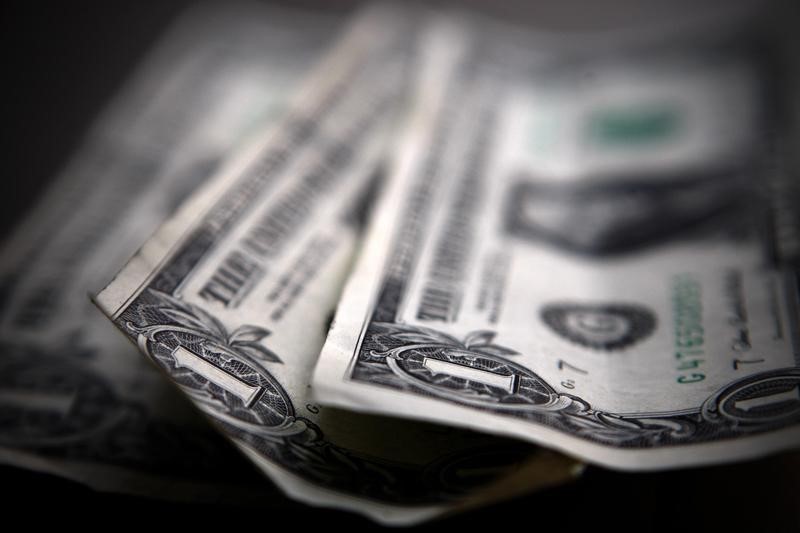By Peter Nurse
Investing.com - The dollar edged higher Friday, but remains near multi-week lows and was set for a fourth consecutive week of losses with the U.S. Federal Reserve retaining its dovish monetary policy even as the economy recovers.
At 2:55 AM ET (0755 GMT), the Dollar Index, which tracks the greenback against a basket of six other currencies, was up 0.1% at 90.648, trading around levels last seen in late February.
The index is on course to end the week 0.2% lower, bringing its losses for April to 2.8%. A four-week losing streak would be the longest since the six-week slide to the end of July. In part that's because of the gains of commodity currencies, amid surging prices for both industrial and agricultural products. The dollar's biggest losses this week have been against the Canadian and New Zealand dollars.
EUR/USD traded down 0.1% at 1.2113, near the two-month high of 1.2150 set the previous session. GBP/USD was flat at 1.3942, USD/JPY fell 0.1% to 108.77, just off the two-week high of 109.22 from Thursday. The risk-sensitive AUD/USD rose 0.2% to 0.7779, climbing back toward the six-week high of 0.7818 seen on Thursday.
This dollar weakness was helped by the decision of the Federal Reserve to leave its ultra easy monetary policies in place even while it acknowledged that there had been an improvement in the economic conditions, as typified by first-quarter GDP growth of 6.4%, released Thursday.
“With front-end U.S. real rates already deeply negative and set to fall further as U.S. CPI rises sharply this quarter, this is likely to be a USD negative, particularly when other parts of the world (namely Europe) are set to see an economic rebound in coming months,” said ING analysts, in a note.
Evidence of that coming rebound in Europe came with the release of the first-quarter French GDP figure earlier Friday, with output in the euro area’s second-largest economy growing 0.4% in the three months through March.
Elsewhere, USD/CNY was largely flat at 6.4706 despite China’s manufacturing activity accelerating at a slower-than-expected pace in April, with said the country’s manufacturing Purchasing Managers’ Index coming in at 51.1, lower than March’s 51.9 reading.
Staying in Asia, USD/KRW rose 0.4% to 1,111.85 after South Korea’s industrial output fell 0.8% on the month in March, shy of expectations for an increase of 0.1%.
Additionally, USD/TRY dropped 0.1% to 8.2093 after Turkey's central bank raised its year-end inflation forecast on Thursday to 12.2% from 9.4%, and its new governor said tight policy would be maintained until price pressures decline.
“While the Central Bank of Turkey sees the inflation rate peaking in April, the trajectory is relatively optimistic compared to current market expectations,” added ING.
